1. Представьте, что к вам в город приехала группа туристов. Какие бы достопримечательности города вы им показали и как бы заинтересовали их приехать к вам ещё раз.
Luhansk does not have a very long history. It was created by decree of Catherine the Great after coal and iron ore were discovered here. Russian language is spoken by the majority of people, and the rest, even if they speak Ukrainian, easily understand Russian. There are many different attractions here: monuments and museums, squares famous for their history; parks and churches. Therefore, guests do not have to be bored. What interesting sights of Luhansk can you visit on your own.
Some fans of tourism often doubt that there is something interesting here. However, this is not the case at all. It is worth coming here, if only because the people in the city are distinguished by their resilience. But, to the surprise of many tourists, there are quite a lot of interesting things in Lugansk, as well as in its surroundings.
What to see in Lugansk in a day
Lugansk is small, about 500,000 people lived here until 2014. For this reason, all sightseeing is carried out in one day.
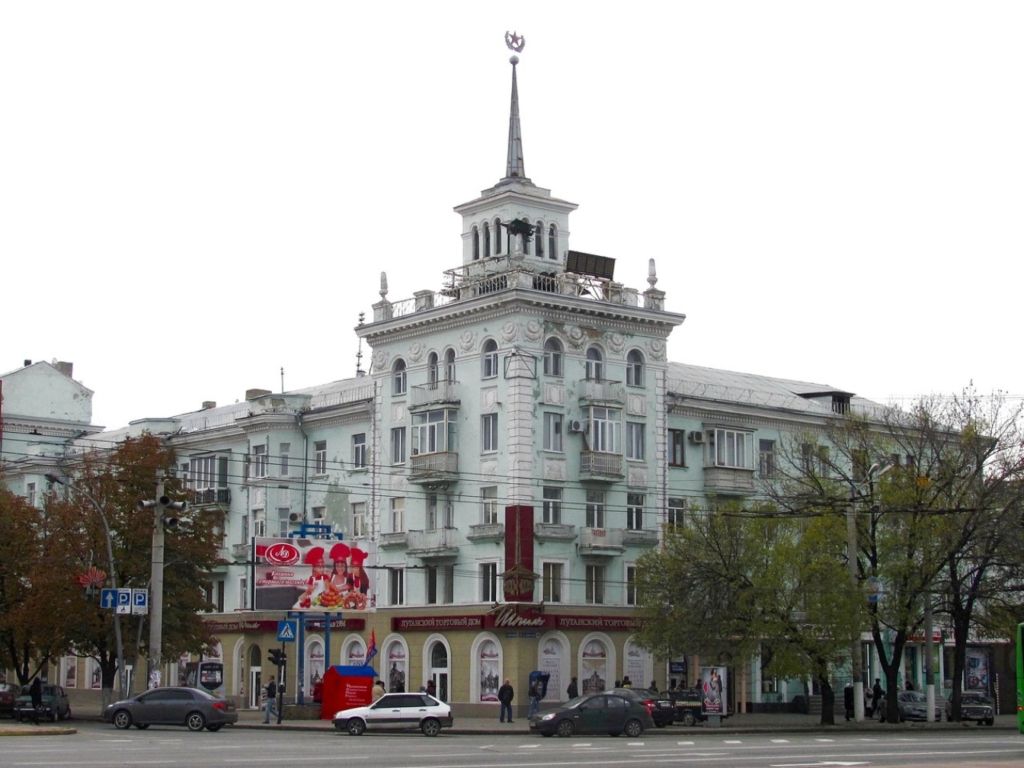
A house with a spire
The main street of the city is called Sovetskaya. Along it there is a bus station, numerous restaurants and cafes. There is the central library of the region named after M.Gorky. Also you can find here small shops and huge supermarkets. At night, the lighting works with bright lanterns.
Autumn on V. Dahl Street.
The second street, which arouses the interest of tourists, was named after the man who once lived on it. This is V. Dahl Street. It is considered the first among the streets that appeared in the town. It was inhabited mainly by construction specialists whom Ekaterina hired to build a foundry. It suffered quite a lot during the shelling, so many buildings had to be restored.
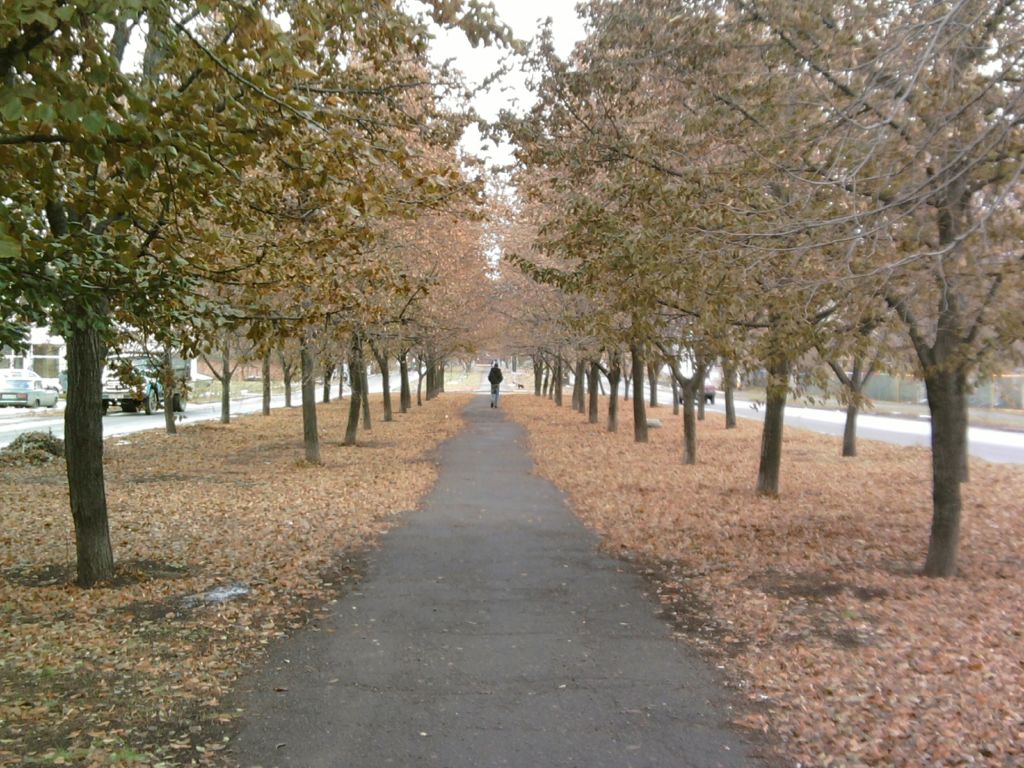
This is Dahl's literary museum, where he lived for a long time. The exterior of the building does not differ from other buildings on the street. But next to the museum there is a monument to the lexicographer and writer. And inside, the room has retained its appearance since that time. Personal belongings belonging to the writer are on display in the house.
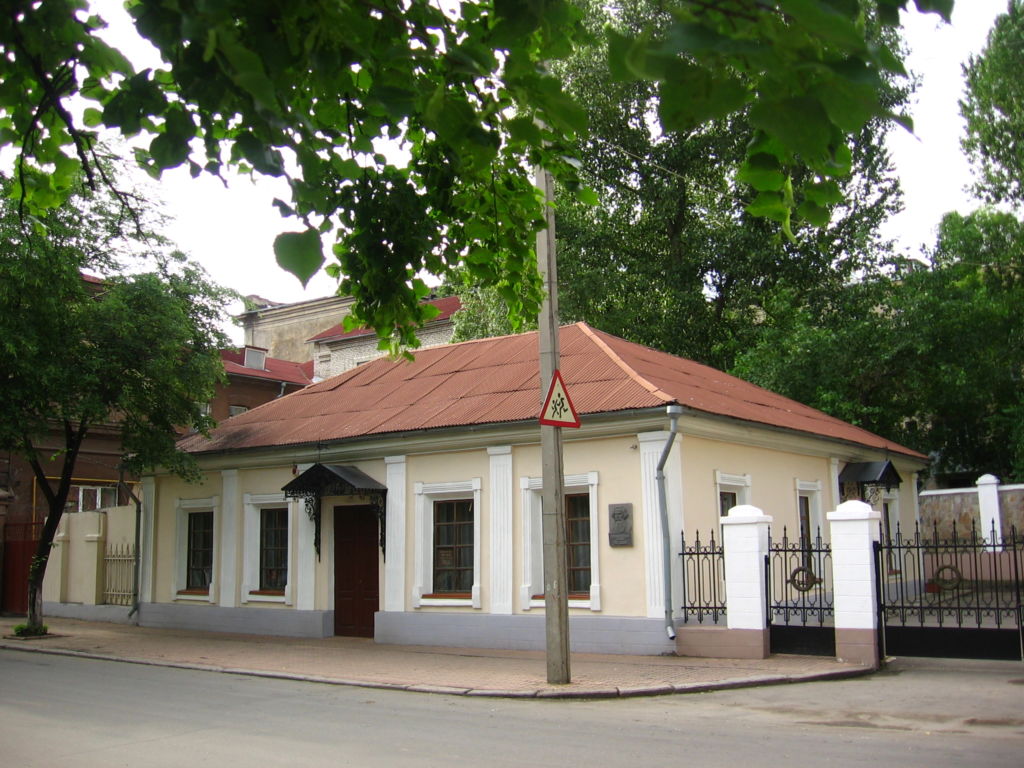
A literary memorial museum is dedicated to the life and work of an outstanding doctor, writer, lexicographer and ethnographer. It was founded on November 22, 1986 on the street where the future lexicographer was born. The museum is one of the branches of the Museum of History and Culture of the city of Lugansk.
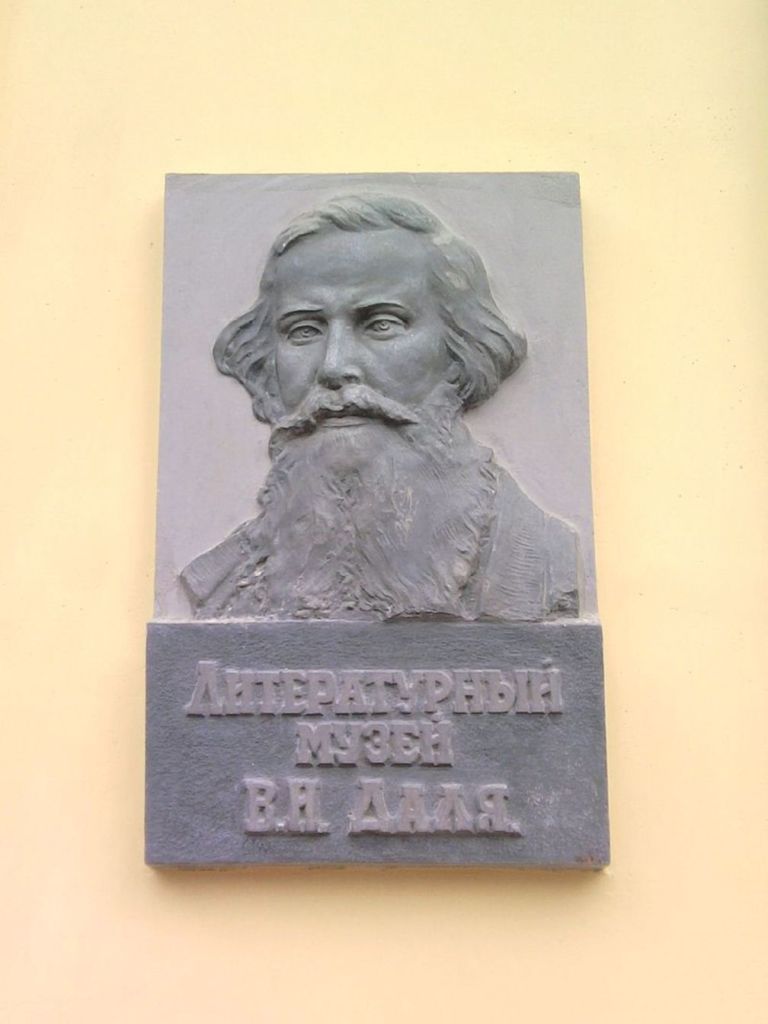
Monument to Prince Igor
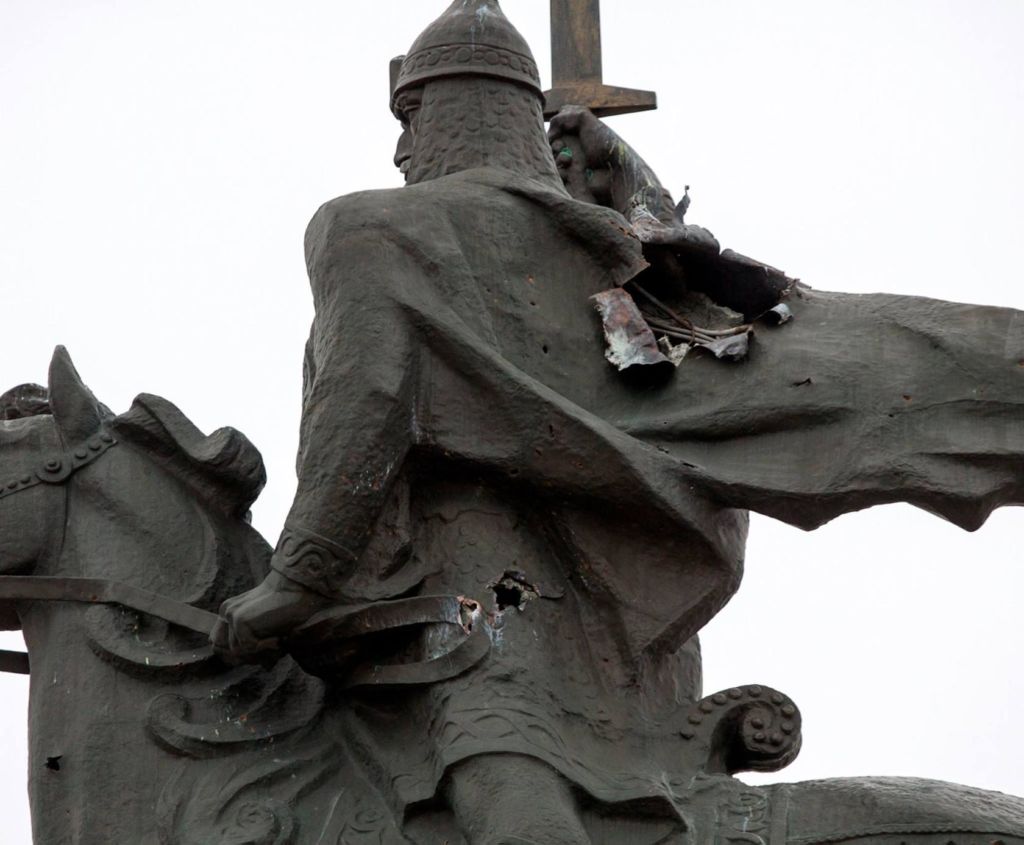
The opening of the monument in 2003 was timed to coincide with the 65th anniversary of the formation of the Luhansk region In autumn 2003, a historical monument of the region, Prince Igor, stood on the top of the hill, towering over the Seversky Donets. According to one of the legends, Seversky prince began the famous campaign from Lugansk steppe, described in the "Word about Igor's Regiment". In summer 2008, the sculpture of prince was reconstructed and then reopened. In general, it is planned to create a "Princely Court" in the form of a historical complex where a cafe and other buildings in the style of Igor's time will be opened. In the meantime, this complex symbolizes the military valor of the Slavs and their fraternal friendship. This monument has become the business card of Lugansk.

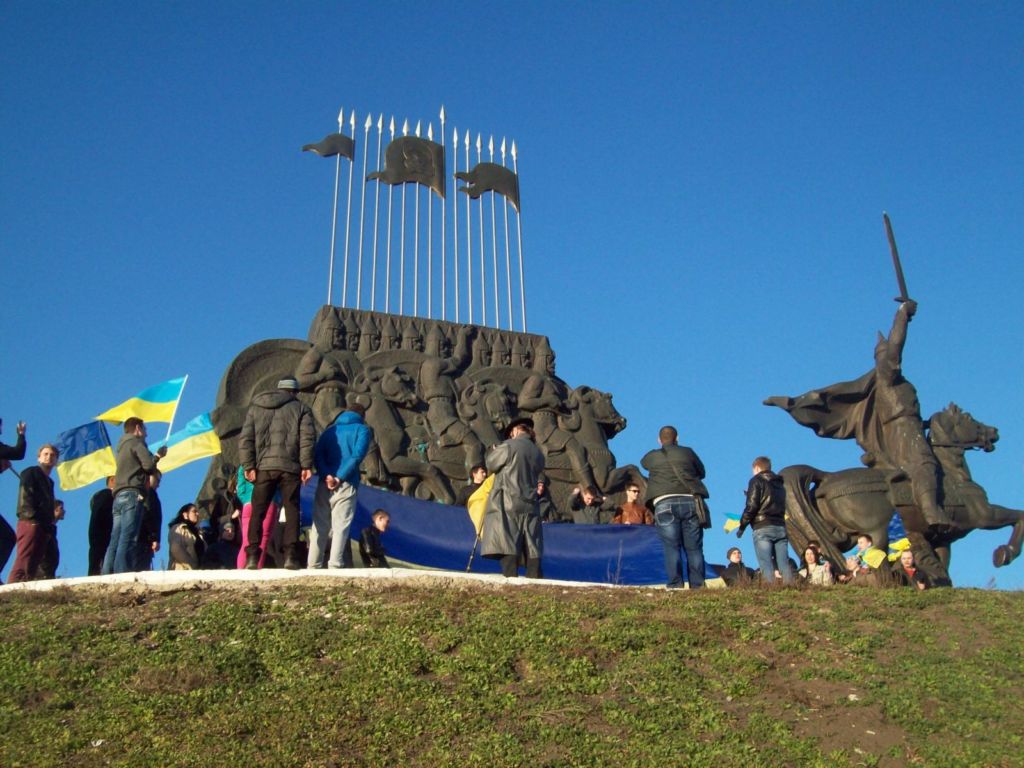
According to legend, Prince Igor Svyatoslavich passed through these places with his squad against the Polovtsians.
Lugansk Park-Museum of Polovtsian women
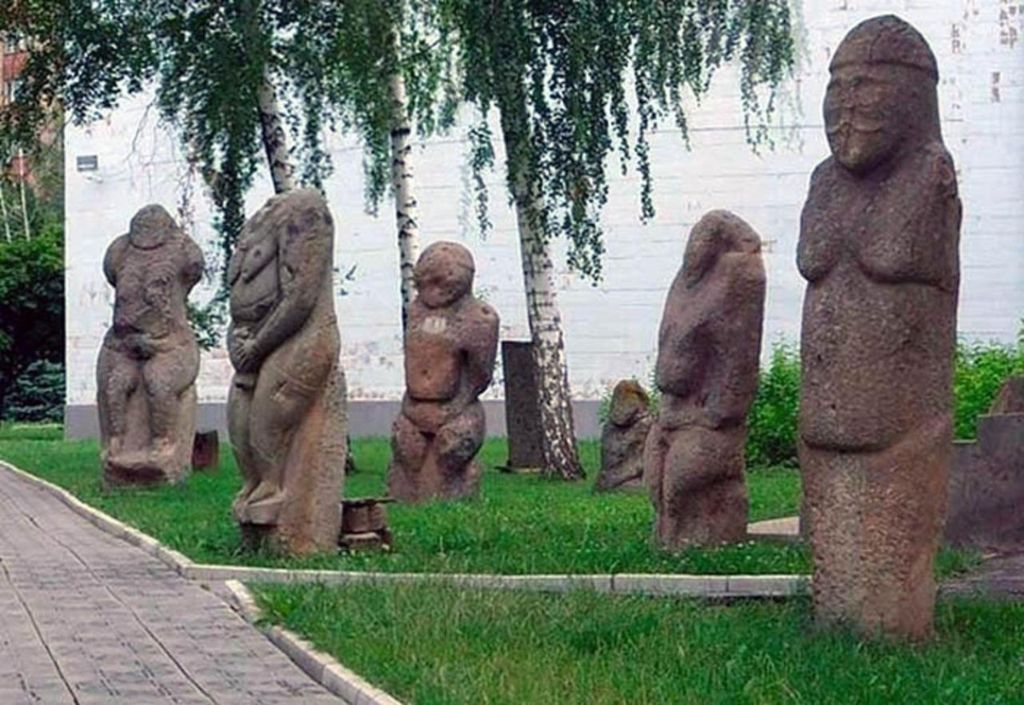
It is located on the territory of Luhansk Taras Shevchenko National University. It is the Park-Museum of anthropomorphic steles and Polovtsian stone sculptures.It is located in the open air and is one of the largest pagan museum parks in the post-Soviet space. An inspection of the historical sites of the city can be combined with a walk through the park-museum of stone women, located in the open air near the LNU named after T.G. Shevchenko. This park contains about seventy exhibits representing different times, starting from the 11th century. They were collected at one time by students of the Faculty of History.
Peter and Paul Cathedral
This is the most ancient temple in the Luhansk region. Its wooden building was built in the 1760s. At the beginning of the 20th century, after repairs to the cathedral, the thrones and the bell tower were completed. Under Soviet rule, the church was closed and a school was opened there. It is amazing that the temple under the Soviet regime was preserved as it was. Since 1942, services have been restored here. Now this temple has been restored after repair and reconstruction and is open to tourists and worship services.
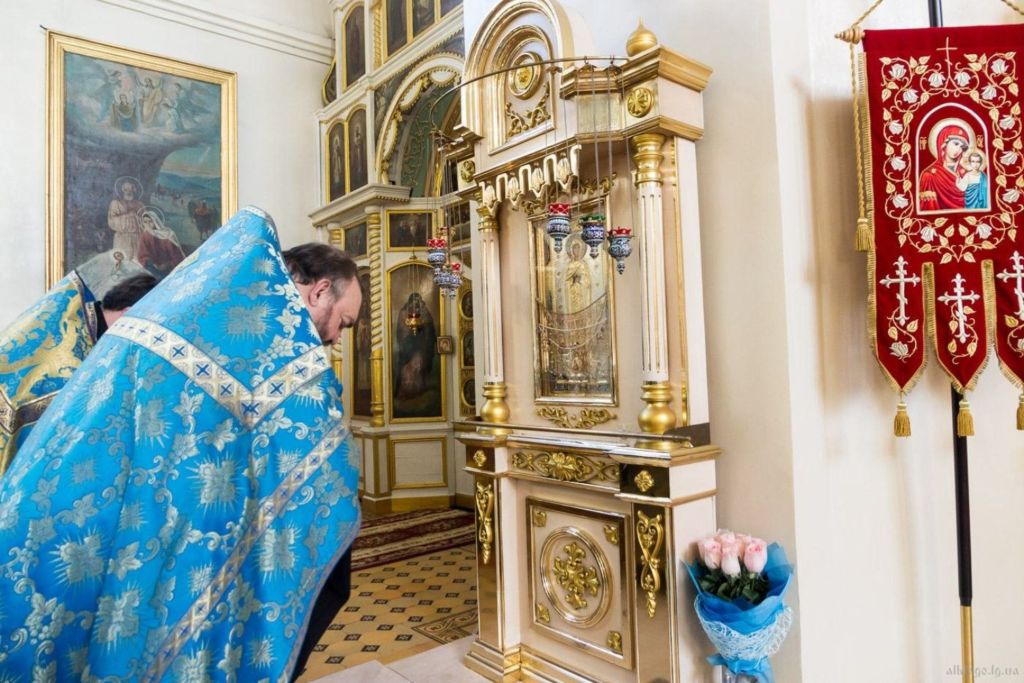
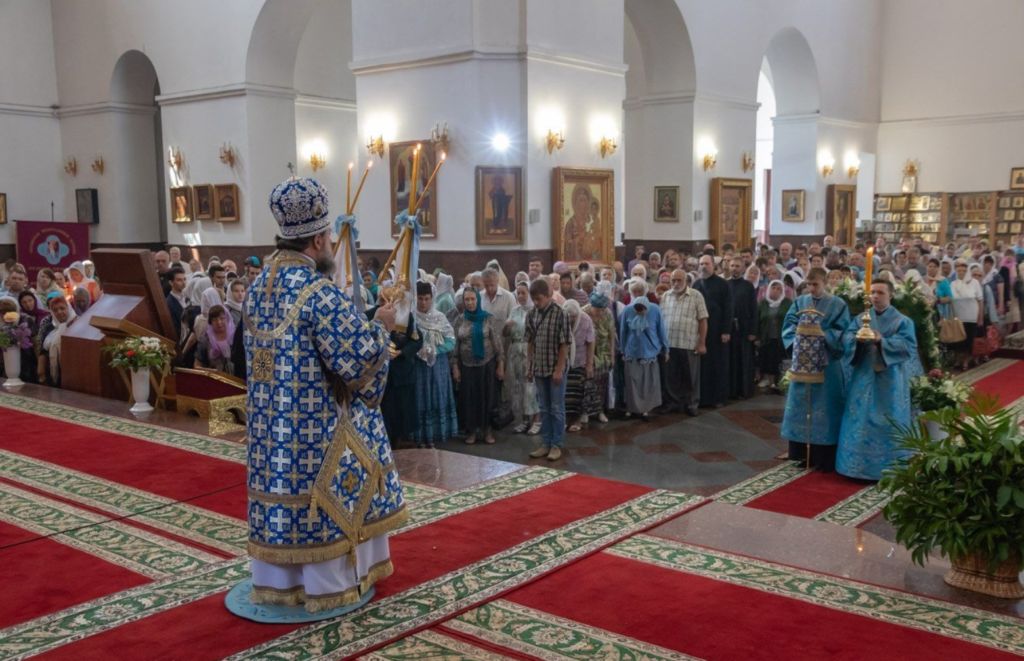
Museum of Local Lore, the cannon "Unicorn"
Such a tourist site is located in every city. It is located in the old part of Lugansk, on the site where a monument to the founder of the foundry , the German K. Gascoigne, stands relatively recently. Not far from the entrance there is also a unique exhibit: a cannon called the "Fortress Unicorn", which was cast at the Lugansk factory. The date of its manufacture is 1814. This cannon is the oldest of the howitzers standing as monuments in the region. Museum staff often arrange exhibitions in the halls. Here you can learn about the history of the city and the region. A unique exhibit is the trophies preserved since the First World War — British tanks captured during one of the battles by the Russian army. The tanks were transferred to Lugansk by the then People's Commissar and are unique, since there are almost no such tanks in the world. In 2009, they underwent restoration and were reinstalled in their place.
Thousands of visitors pass by the cannon to the museum every year. The cannon stands near the Museum of local Lore.
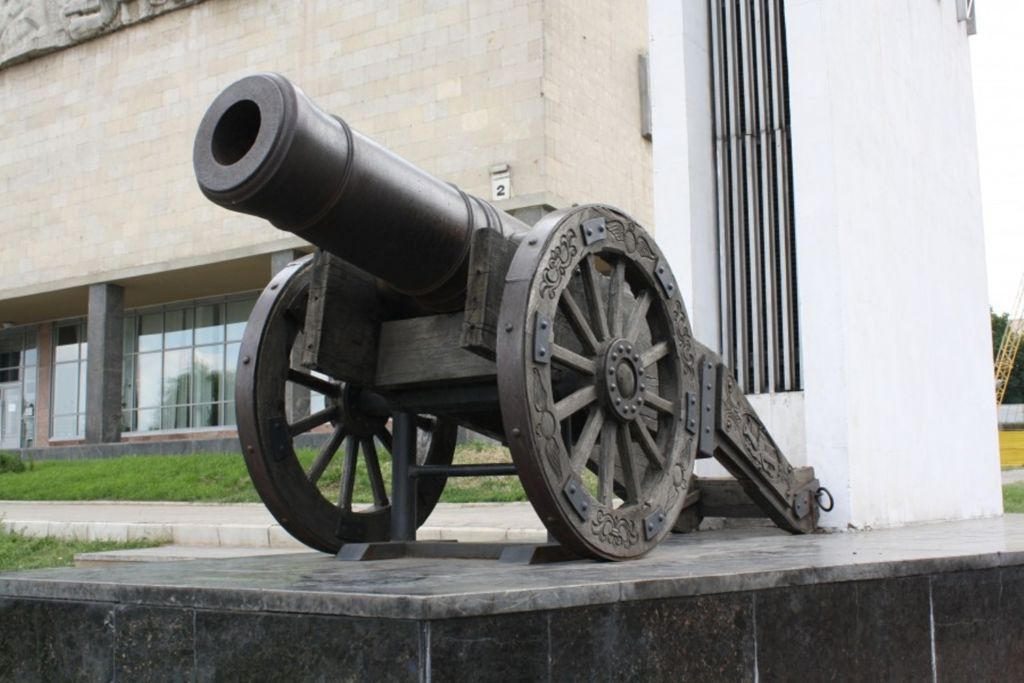
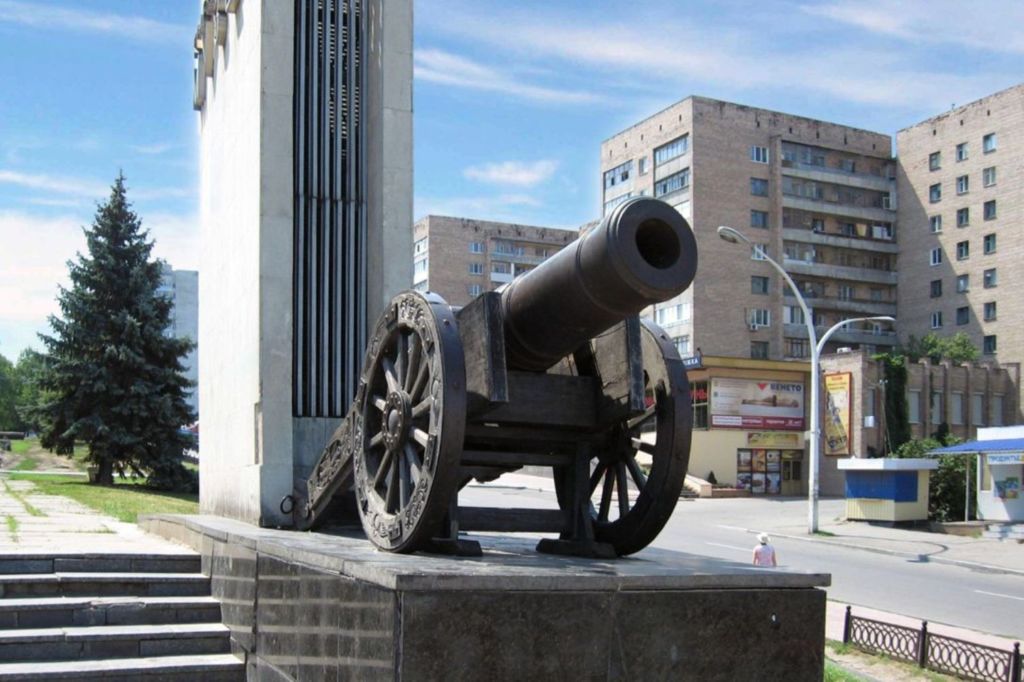
Memorial complex "Monument to the Fighters of the Revolution"
In front of the trophies of the First World War there is a monument to the Fighters of the Revolution, erected in 1937. It was destroyed during the Second World War, and then after the liberation of the city. The restoration process was completed by mid-1944.
The eternal flame is burning near the monument. The complex consists of marble slabs, columns and sculptures.

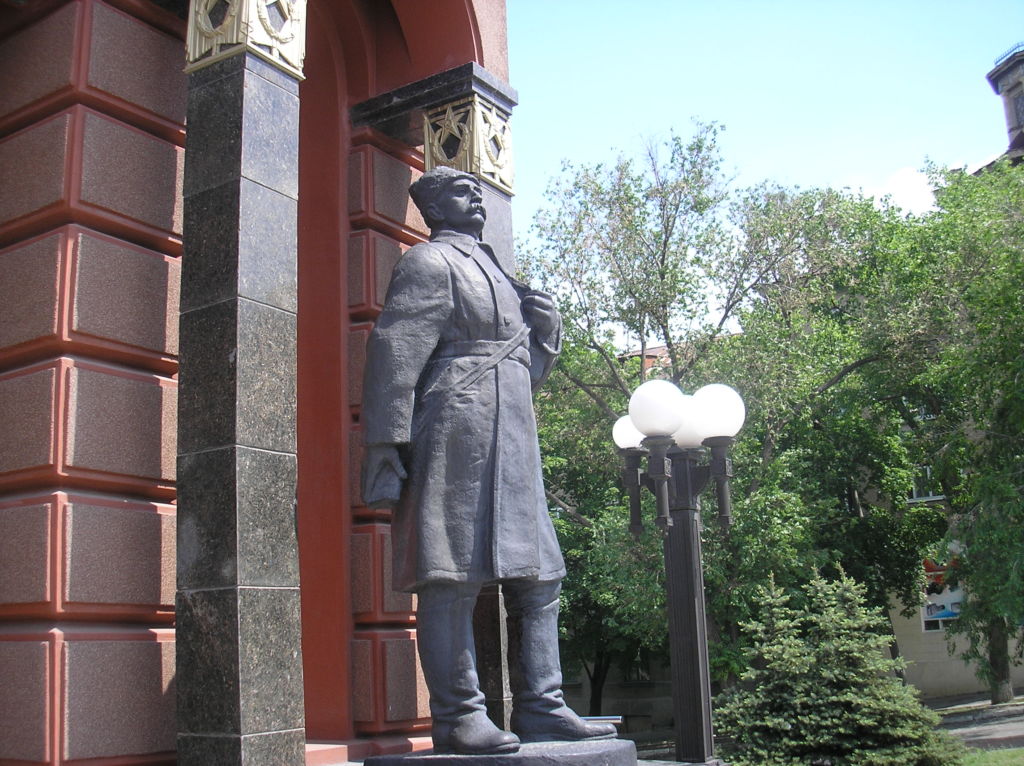

Museum of History and Culture
The building where the museum is now located dates back to the 1880s. It was built for a certain V. Verbovsky, the then head of the city. By 1919, it was occupied by the City Duma and the City Council, and a store was located on the 1st floor. Then there was a technical school here, and after the Second World War the building was transferred to the Museum of local lore. Now the Museum of History is located here. The rooms inside were repeatedly rebuilt depending on what the functions of the building were. But the facade has not changed and has been preserved as it was originally. But it had to be reconstructed after the shelling of the Armed Forces of Ukraine in 2014, when a shell hit the building, damaging the 2nd floor.
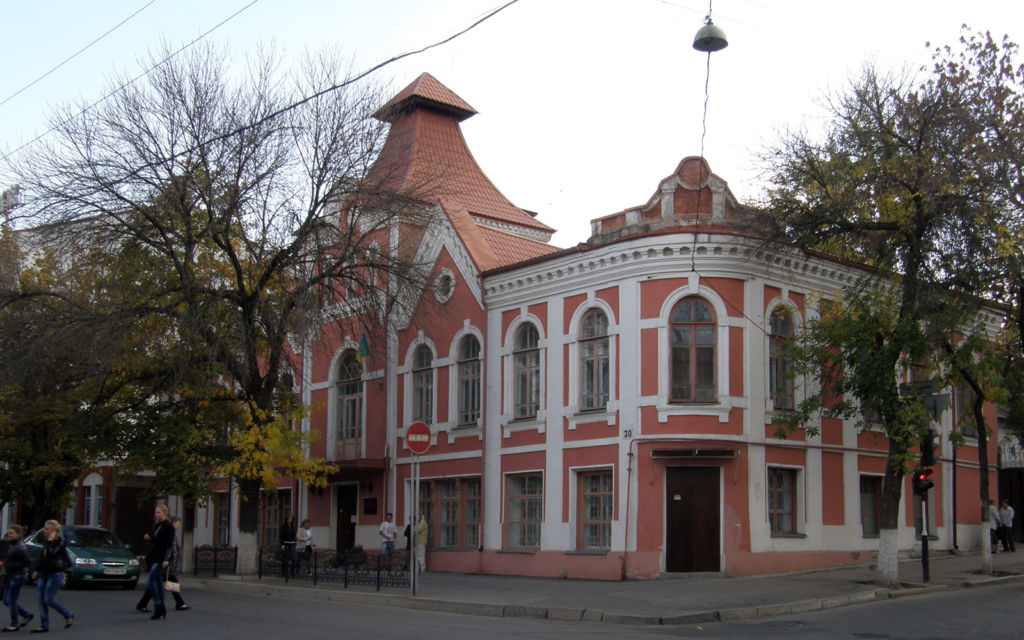
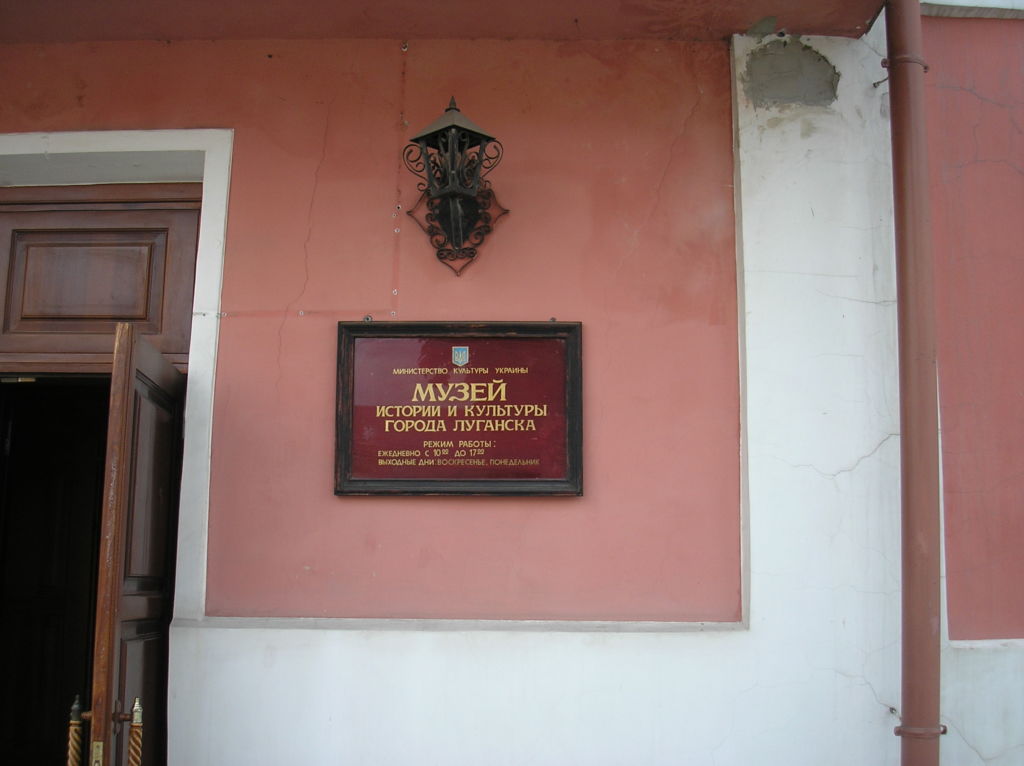
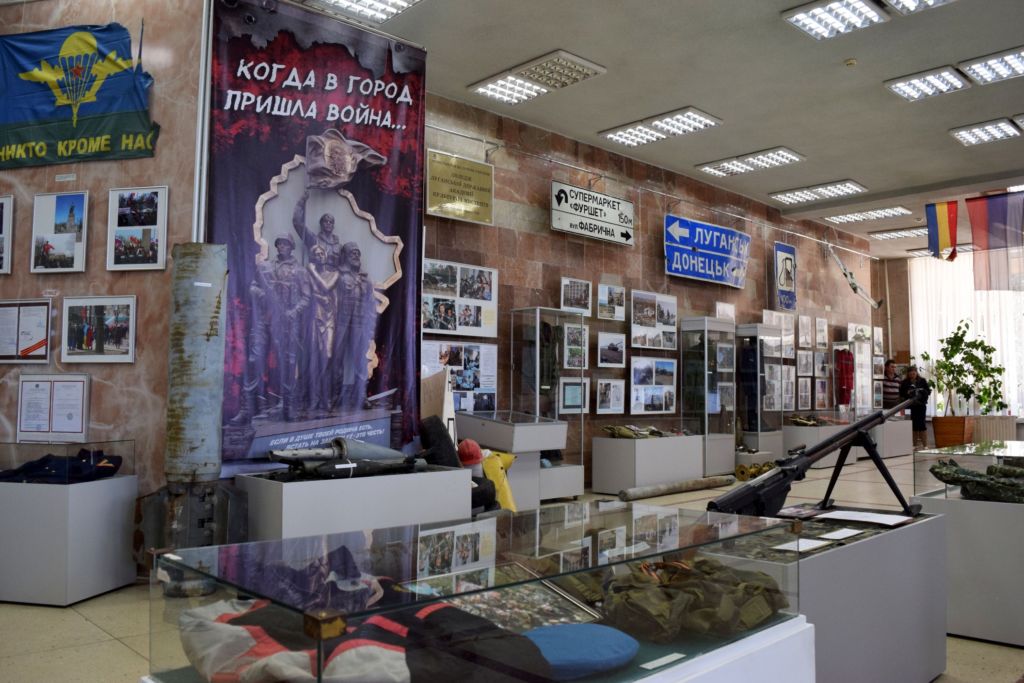
Pele Museum
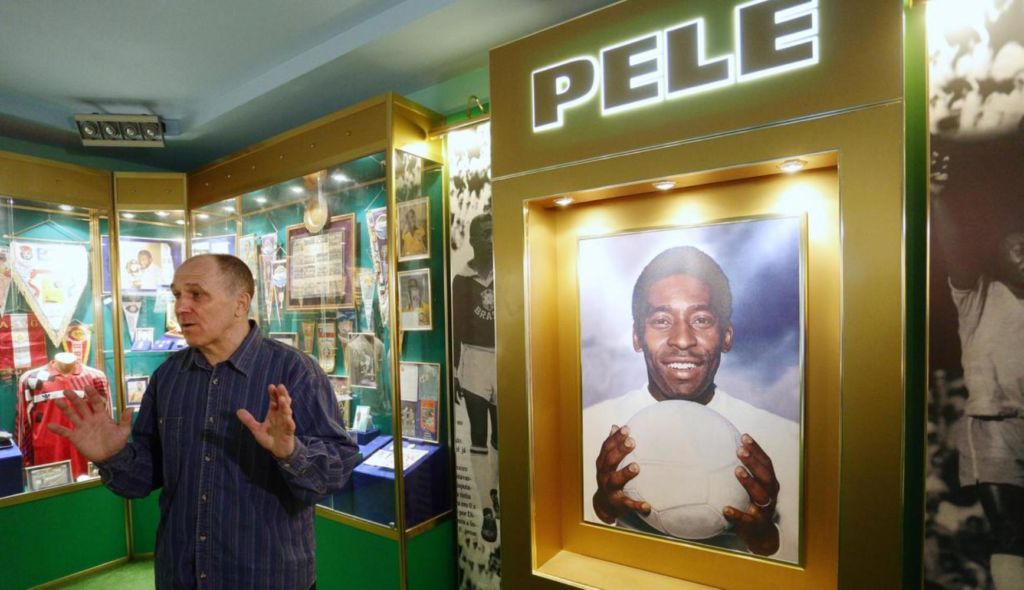

The city is home to the Pele Museum, the only museum dedicated to the famous Brazilian footballer Pele. It was created by N. Khudobin, a businessman from Luhansk, in the summer of 2012. This facility has become a gift to football fans. The opening of his museum was attended by football players of the Luhansk Zarya team, the Brazilian ambassador, the mayor of Lugansk and thousands of fans. Nikolai has been collecting his exhibits for 40 years. The football player's belongings, pennants and autographs are stored there. Khudobin himself personally met with Pele, went to matches with his participation, received several autographs from the football player.
2. Выступите на конференции и расскажите о выдающейся личности вашего края.
Luhansk region is a beautiful region. Luhansk region is amazing for its steppes, rivers, forests, flora and fauna. Wonderful people live in Luhansk region, those who create the history of their native land.
 Kliment Yefremovich Voroshilov (1881-1969) was
Kliment Yefremovich Voroshilov (1881-1969) was
a statesman, party and military figure, Marshal of the Soviet Union, twice Hero of the Soviet Union, Hero of Socialist Labor.
He was born into a poor family of a wayfarer and a day laborer in the village of Verkhneye, Bakhmutsky district, now
Luhansk region. From the age of 7, Voroshilov chose
pyrite in the mines, for which he received a dime a day, grazed cattle. In 1893 — 1895 he successfully studied at the zemstvo school, where his education was completed. Since 1896, he worked at the Yurievsky Metallurgical Plant (Alchevskaya station) as an assistant locksmith. It was here that he began to attend a revolutionary circle, took part in mass gatherings and a strike. He was arrested for the first time and fired from his job.
In 1903, he got a job at the Lugansk Hartmann Locomotive Plant. Here he joined the RSDLP. In 1904, he was elected a member of the Lugansk Bolshevik Committee, and then headed it. In 1906, he was elected by the Lugansk Bolsheviks as a delegate to the IV Congress of the party. There he met V. I. Lenin for the first time. K. E. Voroshilov conducted diverse underground party work in Baku, St. Petersburg, Tsaritsyn. He was repeatedly arrested and served exile. In March 1917, he returned to his native Lugansk, became chairman of the Lugansk Council of Workers' Deputies and the City Duma. With a mandate from the Lugansk Bolsheviks, he participated in the work of the VI Congress of the Bolshevik Party.
In November 1917, he was commissar of revolutionary Petrograd. Together with F. E. Dzerzhinsky, he worked on the organization of the Cheka. In early March 1918, he organized the 1st Lugansk Socialist detachment, which defended Kharkov from German-Austrian troops. During the Civil War, he was commander of the Tsaritsyn group of troops, Deputy commander and member of the Military Council of the Southern Front, Commander of the 10th Army, People's Commissar of Internal Affairs of Ukraine, commander of the Kharkov Military District, commander of the 14th Army and the internal Ukrainian Front. One of the organizers and a member of the RVS of the First Cavalry Army. In 1920, he was awarded the honorary revolutionary weapon for his military services. In 1921, at the head of a group of delegates to the X Party Congress, he participated in the liquidation of the Kronstadt anti-Soviet rebellion.
Voroshilov is one of the outstanding organizers and commanders of the Red Army. For almost 15 years he served as the People's Commissar for Military and Naval Affairs. Since 1940, he was Deputy Chairman of the Council of People's Commissars of the USSR and Chairman of the Defense Committee under the Council of People's Commissars of the USSR.
During the Great Patriotic War, Voroshilov held senior positions in the Soviet Army. He was a member of the State Defense Committee, commander-in-chief of the troops of the North-Western direction, commander of the troops of the Leningrad Front, commander-in-chief of the partisan movement. In 1943, he participated in the Tehran Conference.
After the Patriotic War, K. E. Voroshilov worked for seven years as Deputy Chairman of the Council of Ministers of the USSR. From 1953 to 1960, he was Chairman of the Presidium of the Supreme Soviet of the USSR. Since May 1960, he has been a member of the Presidium of the Supreme Soviet of the USSR. Voroshilov was a member of the Central Committee of the CPSU for forty—three years, from 1926 to 1960 he was a member of the Politburo of the Central Committee of the CPSU, a delegate to seventeen party congresses, a deputy of the Supreme Soviet of the USSR of seven convocations.
Voroshilov was one of the first in the country to be awarded the title of Marshal of the Soviet Union. Hero of the Mongolian People's Republic. He was awarded eight Orders of Lenin, six Orders of the Red Banner, Orders of Suvorov I degree, the Red Banner of the Uzbek SSR, the Red Banner of the Tajik SSR, the Red Banner of the RSFSR, foreign orders and medals, as well as honorary weapons.
Marshal Voroshilov is buried in Moscow on Red Square near the Kremlin Wall.
The history of Lugansk is inextricably linked with the name of Klim Voroshilov. In 1935-1958 and in 1970-1990 the city was called Voroshilovgrad.
On February 4, 1981, in Lugansk, on Kotsyubinsky Street, a monument by sculptor A. Voroshilov was unveiled on the 100th anniversary of the birth of K. E. Voroshilov.
Posyado and architect A. Dushkin.
In Budenovka, a strict soldier's overcoat, Klim Voroshilov greets the city.
Dal Vladimir Ivanovish 
(1801-1871) — an outstanding writer, ethnographer,
the author of the famous "Explanatory Dictionary of the living
the Great Russian language".
He was born on November 10, 1801 in the village
Russian Russian factory, Yekaterinoslav province, where
his father, the Dane Johann Dahl,
who accepted Russian citizenship in 1799 along
with the Russian name Ivan Matveyevich Dahl, served as a doctor of the mining department at the foundry (multilaterally educated, linguist, even knew Hebrew); German mother, Maria Khristoforovna Dahl (nee Freytag), translated translated into Russian by Gesner and Ifland.
The Daley family lived in Lugansk in 1801-1804. After completing a course in the Marine Corps, V.I. Dahl served in the Navy for several years, but, unable to stand the sea, he retired and entered the University of Dorpat, from which he graduated from the Faculty of Medicine.
His field life as a military doctor brought him into contact with residents of various regions of Russia, and very early he began to collect materials for the future "Explanatory Dictionary". In 1831, V. Dahl participated in a campaign against the Poles and distinguished himself during the crossing of the Ridiger across the Vistula at Yuzefov: in the absence of an engineer, Dahl built a bridge, defended it during the crossing and then destroyed it himself. For failing to fulfill his direct duties, he was reprimanded by his superiors, but Emperor Nicholas I awarded Dahl the order.
After the end of the war, Dahl entered the St. Petersburg Military Land Hospital as a resident. Often visiting literary salons, he became close friends with Pushkin, Gogol, Krylov, Zhukovsky, Prince Odoevsky. His first literary experience ("Russian fairy tales. Pyatok the First", St. Petersburg, 1832 - retelling of folk tales) discovered his ethnographic inclinations. This book got the author into trouble. According to F. Bulgarin's denunciation, it was banned, and Dahl was taken into custody in the III department of His Imperial Majesty's Own Chancellery, but on the same day
released thanks to the intercession of Zhukovsky. Nevertheless, Dahl could not print anything under his own name for a long time. In 1832, the aspiring writer Dahl took the pseudonym Cossack Lugansky, which is evidence of his deep reverence for his small homeland. Under this pseudonym, his first books were published: "Russian Fairy tales of the Cossack of Lugansk", "There were also tall tales of the Cossack of Lugansk", "Novellas, fairy tales and stories of the Cossack of Lugansk".
V.I. Dahl served in Orenburg for 7 years; during this time he accompanied the heir to the throne (later Emperor Alexander II) on his trip around the region and participated in the Khiva campaign of 1839.
In 1836, V. Dahl came to St. Petersburg and was present at the death of A.S. Pushkin, from whom he received a talisman ring as a gift.
All this time, Dahl does not leave medicine, especially addicted to ophthalmology and homeopathy. At the same time, Dahl compiled textbooks for military institutions on botany and zoology, published a number of novels and essays in many magazines of his time.
From 1849 to 1859, V.I. Dahl was the manager of the Nizhny Novgorod land office, which gave him the opportunity to collect a variety of ethnographic material. Russian Russian literature, "On the dialects of the Russian language", "Sailor's Leisure", a number of articles on the dangers of literacy alone without education and a whole series of essays from Russian life were published during this time. In Nizhny Novgorod, Dahl prepared for publication "Proverbs of the Russian People" (Moscow, 1862; 2nd edition, St. Petersburg, 1879).
In 1859, he moved to Moscow, lived in a house on Presnya, built by the historiographer Prince Shcherbatov, who wrote The History of the Russian State. Here Dahl completed many years of work on the Explanatory Dictionary (1st edition, 1861-1868; 2nd edition, St. Petersburg, 1880-1882, and 3rd edition edited by Professor I. A. Baudouin de Courtenay, St. Petersburg, 1903-1909). At the same time, Dahl's writings and articles appeared in print: "Complete Works", "Novellas", "Soldiers' Leisure".
In 1868, Dahl was elected an honorary member of the Imperial Academy of Sciences. Dahl gave the collected songs to Kireevsky, the fairy tales to Afanasyev. The rich, best collection of Dahl's lube paintings at that time was received by the Imperial Public Library and subsequently included in Rovinski's publications.
In the last years of his life, Dahl became interested in Spiritualism and Swedenborgianism, was engaged in translating the first books of the Bible into the vernacular language, and printed new "Paintings of Russian life." Before his death, he converted to Orthodoxy (until then he was a Lutheran).
In 1871, in Lugansk, in honor of the 180th anniversary of the writer's birth, a monument to V.I. Dahl was erected. Sculptors I. Ovcharenko, V. Orlov, architect G. Golovchenko created the image of a wise researcher immersed in his work. Nearby, on the street bearing his name, is the house museum of V.I. Dahl.
G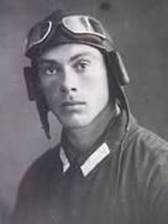 astello Nikolay Francevich (1907-1941) — pilot, Hero of the Soviet Union.
astello Nikolay Francevich (1907-1941) — pilot, Hero of the Soviet Union.
He was born in Moscow. Nikolai Gastello studied at the 3rd
Sokolniki City Men's College named after A. S.
Pushkin. In 1918, due to famine
, he was evacuated to Bashkiria as part of a group of Muscovite schoolchildren.
Nikolai Gastello began his career in 1923
a year later, he became an apprentice carpenter. In 1924, the family
Gastello moved to Murom, where Nikolai enrolled
as a locksmith at
the F. E. Dzerzhinsky Locomotive Plant, where his father also worked.
In parallel with the work of N. F.
Gastello graduated from high school. In 1928, he joined the CPSU(6).
In 1930, the Gastello family returned to Moscow, and Nikolai joined the First State Mechanical Plant of Construction Machines named after May 1st. In May 1932, he was conscripted into the Red Army and sent to study at the aviation school of pilots in the city of Lugansk, where he studied until December 1934.
Gastello's service began in the 82nd Heavy Bombardment Squadron of the 21st Aviation Brigade, based in Rostov-on-Don (1933-1938). Having started flying as a right-hand pilot on a TB-3 bomber, N. F. Gastello had been piloting the aircraft independently since November 1934.
In 1938, as a result of the reorganization of the unit, Nikolai Frantsevich Gastello found himself in the 1st heavy bombardment aviation regiment. In May 1939, he became a flight commander, and a little over a year later — deputy squadron commander. N. Gastello participated in the battles of Khal hin Gol as part of the 150th high-speed bomber Aviation Regiment, to which the squadron of the 1st TB AP was attached. He participated in the Soviet-Finnish War and in the annexation of Bessarabia and Northern Bukovina to the USSR.
In autumn of 1940, the aviation unit was relocated to the western borders, to the city of Velikiye Luki, and then to the Borovskoye aviation town near Smolensk. In 1940, N. F. Gastello was awarded the rank of captain. In the spring of 1941, Nikolai Gastello, having undergone appropriate retraining, mastered the DB-ZF aircraft.
During the Great Patriotic War, N. Gastello was appointed squadron commander. On June 24, 1941, a Junkers 88 was shot down by heavy machine gun fire from an airplane at the airfield.
Gastello's name became known already in the early days of the war as a symbol of the indomitable will of the Soviet man. On the fifth day of the Fascist invasion of our country, on June 26, 1941, Nikolai Gastello bombed an enemy motorcade on the Molodechno—Radoshkovichi road. As a result of anti-aircraft artillery fire, the plane was shot down. Gastello directed his plane engulfed in flames at a cluster of enemy tanks and vehicles.
N. F. Gastello was posthumously awarded the title Hero of the Soviet Union, with the award of the Golden Star and the Order of Lenin.
On May 8, 1981, a monument to Nikolai Gastello was unveiled on the territory of the Voroshilovgrad Flight School.
Bust of Gastello is installed on the territory of the former Lugansk Higher Aviation School of navigators.



























 Kliment Yefremovich Voroshilov (1881-1969) was
Kliment Yefremovich Voroshilov (1881-1969) was
 astello Nikolay Francevich (1907-1941) — pilot, Hero of the Soviet Union.
astello Nikolay Francevich (1907-1941) — pilot, Hero of the Soviet Union.
















